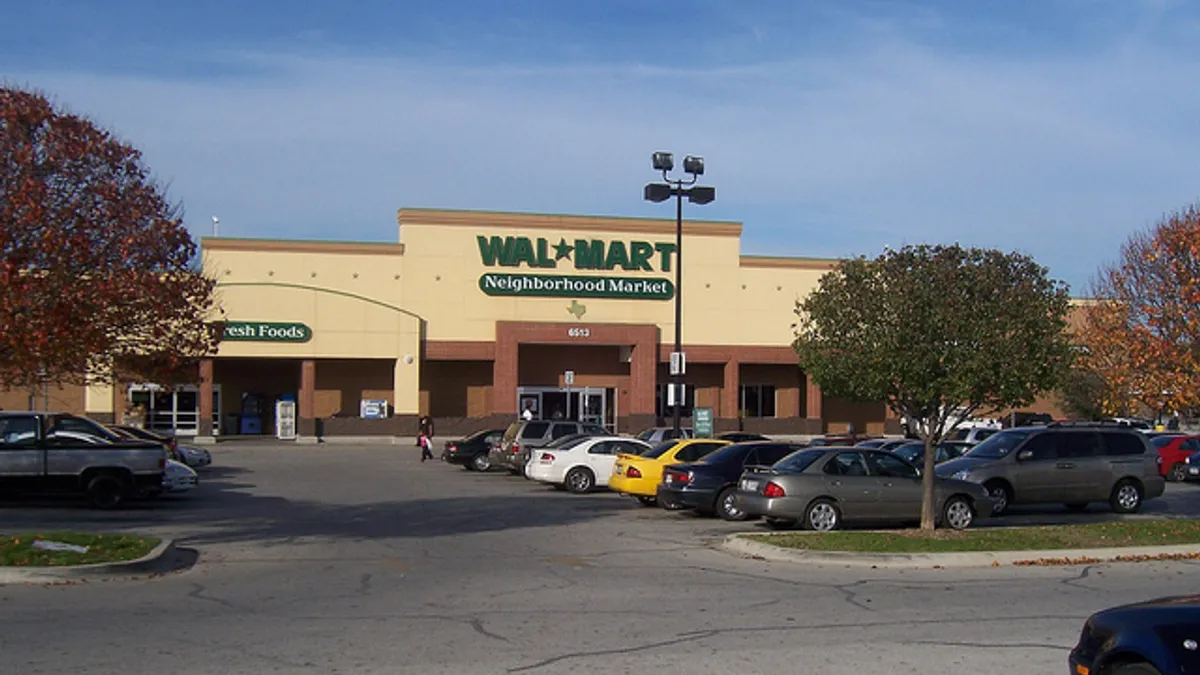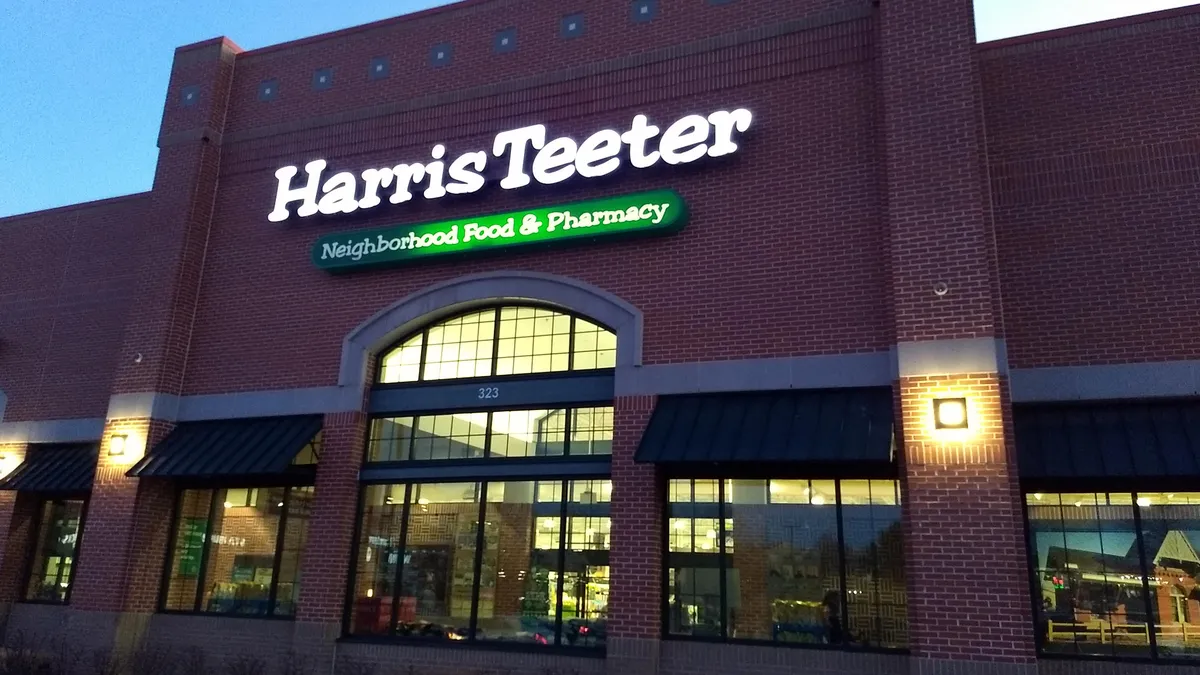Dive Brief:
- Investors are increasingly finding grocery real estate to be a good bet for long-term growth, according to The Wall Street Journal. This bucks the overall trend in retail, with real estate buyers turning away from stores as online sales grow.
- Among the more popular investments are retail sites that house Walmart Neighborhood Market stores. According to the Journal, the retailer is considered a steady revenue generator.
- “It’s been a profitable and high-profile assignment for us to invest in, build and now offer for sale these Wal-Mart occupied stores that have brought with them jobs, lower prices, and convenience to many communities where the closest grocery store was sometimes 100 miles or more distant from where customers live,” the CEO of development firm Hutton Cos., which has built numerous Walmart stores, told The Wall Street Journal.
Dive Insight:
Is buying up grocery real estate the new home flipping? The Wall Street Journal reports an interesting trend of investors, among them many boomers, buying the big boxes that house grocery stores in order to get a solid return. While certainly an intriguing investment strategy, there seems to be some merit behind it.
Retailers typically rely on a mix of ownership and leasing structures for the properties they operate. Some retailers — Lidl, for example – opt for outright property ownership nearly everywhere they operate. Others enter into 10 to 20 year fixed-rent lease arrangements, a huge benefit for long-term operators. Still others, such as Walmart, take a combined approach. Walmart owns much of the land and stores it builds, but does at times sell some of its stores to real estate investment firms only to lease them back. Walmart even operates its own real estate arm, Walmart Realty.
Some retailers prefer not to be encumbered by non-core assets, which often mean the buildings they’re housed in. Rather than tying up assets in real estate, they instead lease property. This is what Walmart has opted to do in many of its smaller Neighborhood Market locations in the Southeast. Since the retailer is viewed as a long-term occupant — not just in grocery, but the geographic areas in which it operates — Walmart-occupied real estate is viewed as a good option for investors looking for solid returns over a long haul.
The same can be said of other national grocery chains, too. Grocery store space typically doesn't turn over much because once ingrained in a community, stores become committed to the neighborhoods in which they operate. Another reason to gamble on grocery is because unlike other retailer sectors – apparel, home goods, electronics, among them – the industry is relatively immune to economic and recessionary swings. Food and groceries are considered non-discretionary purchases. Even in a down economy, people must eat.
One of the biggest risks involved in grocery store real estate today is the threat of grocery spending moving online. Unlike other retail sectors, consumers still prefer to buy food in a brick-and-mortar store. But this could change going forward. About a fifth of all grocery spending — a total of $100 billion — is expected to come from online shoppers by 2025, according to Nielsen and the Food Marketing Institute. This represents the volume of shopping done at 3,900 grocery stores, according to FMI.








